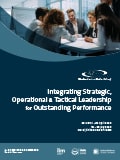Un cours intensif de formation professionnelle sur
Data Management, Planning, Forecasting
& Budgeting using Excel®
Pourquoi choisir cette formation ?
La structure
This comprehensive training course in Dubai consists of two modules which can be booked as a 10 Day Training event, or as individual, 5 Day courses.
Module 1 - Data Management, Manipulation and Analysis using Excel®
Module 2 - Spreadsheet Skills for Planning, Forecasting & Budgeting
Le contenu du cours
Module 1: Data Management, Manipulation and Analysis using Excel®
Premier jour : Introduction à l'environnement MS Excel
- Référencement de cellules, mise en forme de cellules et saisie de formules
- Cahiers de travail ou feuilles de travail
- Copier-coller
- Clic gauche contre clic droit
- Coller spécial
- Graphiques d'introduction
Deuxième jour : Utilisation des fonctions MS Excel pour l'analyse des données fondamentales
- Utilisation des fonctions de texte, FIND(), LEN(), LEFT(), RIGHT() et &
- Utilisation des fonctions de comptage, COUNTA(), COUNTIF(), COUNTIFS() et SUMIF()
- Fonctions statistiques de base, Max et Moyenne
- Filtrage, tri et utilisation de la mise en forme conditionnelle
- Diagrammes de dispersion
Troisième jour : Fonctions intermédiaires de MS Excel
- Utilisation de VLOOKUP() et HLOOKUP()
- Fonctions de date, YEAR(), MONTH(), DAY(), YEARFRAC()
- Sélection de graphiques appropriés
- Introduction aux tableaux croisés dynamiques
Quatrième jour : Effectuer une analyse statistique à l'aide de MS Excel
- Utilisation de MS Excel pour calculer la moyenne, le mode et la médiane
- La différence entre les différentes fonctions d'écart-type et de variance dans MS Excel
- Utilisation de MS Excel pour examiner l'interdépendance
- Dessiner des histogrammes dans MS Excel
- Introduction aux fonctions d'analyse des données
Cinquième jour : Analyse de scénarios et d'hypothèses à l'aide de MS Excel
- Nommer des cellules dans MS Excel
- Relier les cellules entre elles pour entreprendre une analyse de scénario
- Introduction au solveur
- Graphiques avancés
- Partage des résultats de MS Excel avec d'autres formats bureautiques
Module 2: Spreadsheet Skills for Planning, Forecasting & Budgeting
Day Six: Introduction to Spreadsheets using Excel®
- The power of Excel® for building financial models
- The Ribbons of Excel with their commands and functions
- Using formulae: Copying, anchoring and special pasting
- Using functions: financial, statistical and mathematical
- Review of the financial objectives of business: ROI, ROA, ROE
- Overview of Financial Statements
Case Study: Building a Quick Access Toolbar in Excel® and applying it to the analysis of financial statements of a division.
Day Seven: Proper Planning
- Classical strategic planning models
- Cost-Volume-Profit Analysis and Break-Even as a planning example
- Economic Order Quantity as a planning example
- What-if analysis to build scenario's and test sensitivity
- Maximizing and optimizing techniques
- Linear programming and Solver as optimising tools
Case Study: Preparing a planning model and subjecting it to a range of sensitivity analysis in a manufacturing environment.
Day Eight: Fantastic Forecasting
- Forecasting in perspective - the Past vs. the Future
- Necessity to apply a range of different forecasting methods:
- Qualitative Models used in forecasting
- Quantitative Models focussing on time series and regressions methodology
- Forecasting growth rates
- Recording, applying and modifying forecast assumptions
Case Study: Applying the forecasting functions in Excel® to past data and building a model offering various scenario's
Day Nine: Beyond Budgeting
- The budget process: Timing and Cycles
- Setting budgeting objectives and tolerance levels
- Budgeting Techniques
- "Beyond Budgeting" compared to traditional budgeting principles
- Operating and Capital budgets
- Monthly reporting procedures and timely action
Case Study: Building budget based on assumptions - Operating Budget, Cash Budget & Capital Budget
Day Ten: Putting it Together – Building the Comprehensive Model
- Considering the financing mix in strategy
- Considering the Return to Shareholder as the primary indicator
- Build your planning model
- Build your forecasting model
- Build your budgeting model
- Link these together in review
Case Study: Building an integrated planning, forecasting & budgeting model
Le certificat
- Certificat d'achèvement AZTech pour les délégués qui participent et terminent le cours de formation
VOULEZ-VOUS EN SAVOIRPLUS SUR CE COURS ?
© 2024. Le matériel publié par AZTech présenté ici est protégé par des droits d'auteur. Tous les droits sont réservés. Toute copie, distribution, utilisation, diffusion, téléchargement, stockage (sur tout support), transmission, reproduction ou utilisation non autorisée de tout ou partie de ce plan de cours est interdite et constitue une violation des droits d'auteur.







